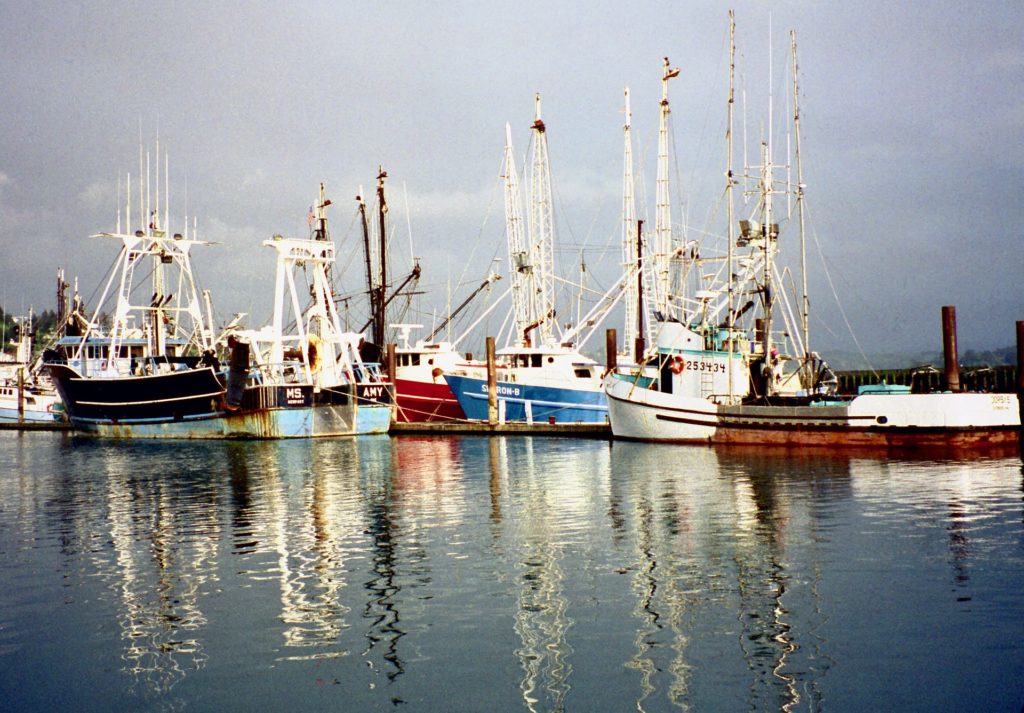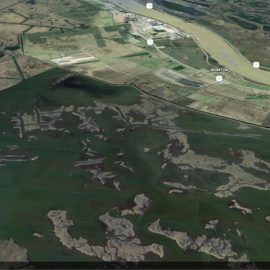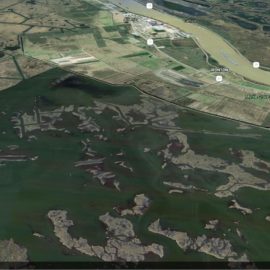
The commercial fishing industry is not happy with the diversion.
Opponents of the state’s controversial plans to construct two large sediment diversions to rebuild coastal land used a Wednesday night public hearing to rail against the upcoming projects, warning of harm to commercial fishing in the area. Representatives of commercial oyster growers, fishers and a variety of community groups objected to plans for the Mid-Barataria Sediment Diversion, a more than $2 billion project set to begin construction later this year, as well as the upcoming $800-million east bank Mid-Breton Sediment Diversion. A new proposal to divert water and sediment into the Central Wetlands Unit area bordering the Lower 9th Ward in New Orleans and Arabi and Chalmette in St. Bernard Parish was also criticized. The comments came during a public hearing at the University of New Orleans on the state Coastal Protection and Restoration Authority’s draft annual plan and an update to its 50-year Master Plan. The diversions are viewed by state officials as key to slowing the land loss devastating Louisiana’s coast, but commercial fishers are deeply concerned despite hundreds of millions being set aside to help those affected deal with the change.
nola.com
A crime against nature when nature is being use to build it?
The Rev. Tyronne Young, a member of the Plaquemines Parish Council, called the authority’s commitment to building the two diversions a “crime against nature” that would ruin livelihoods. “Not only will you be taking food from people, you’re killing people,” Young said. The Plaquemines council recently passed a resolution reaffirming its opposition to the diversion. The Mid-Barataria diversion would deliver up to 75,000 cubic feet per second of Mississippi River water and sediment during high river months through a 2-mile-long channel into Barataria Bay, where officials say that as much as 21 square miles of land will be created over 50 years. That additional land and the longer lifetime of other wetlands in the bay resulting from the diversion’s sediment is expected to reduce flood risk for communities protected by levees in Jefferson, Orleans, St. Bernard and Plaquemines parishes. But the project’s freshwater also is expected to have major impacts on commercial fisheries and will likely wipe out more than 2,000 bottlenose dolphins living in Barataria Bay. And homes and businesses located outside levees south of the diversion likely will experience higher water levels, and some possible flooding, when the diversion is operating, the project’s designers say.
The positive benefits outweigh the negative ones.
The Army Corps of Engineers in December granted permits for the project after an environmental impact statement concluded the benefits outweighed its detriments, in part because the state has set aside $360 million for mitigation of the project’s effects on fisheries and to assist in mitigating potential flood damage, and another $18 million for possible future changes in its operation. A federal-state panel overseeing BP Deepwater Horizon oil spill restoration efforts in Louisiana approved $2.26 billion to pay for the project on Feb. 1, agreeing it was an acceptable use of money to address effects of the 2010 spill on coastal wetlands. An environmental impact statement for the proposed $800 million Mid-Breton Diversion is expected to be released by the Army Corps of Engineers in August. This diversion, located between Woodlawn and Wills Point on the east bank of the river, would release a maximum of 50,000 cubic feet per second of water and sediment into Breton Sound, with the goal of creating 31 square miles of new land over 50 years. Permits for this project are not expected to be considered by the Corps until late 2024. The $270 million Central Wetlands Unit diversion proposal included in the 2023 master plan update calls for up to 5,000 cubic feet per second of water and sediment to be funneled into the wetlands sandwiched between the east bank hurricane levee and the interior 40-Arpent levee. The aim is to assist other projects restoring the cypress-tupelo forest there that was destroyed by salt water from the Mississippi River-Gulf Outlet, before it was shut down after Hurricane Katrina. Work on this project would not begin until after 2043.
The plan itself shows why there is opposition.
Former St. Bernard Parish Councilman George Cavignac, who serves as chief executive of the Gulf Coast Resource Coalition, an organization of diversion opponents, said the environmental impact statement prepared by the Army Corps of Engineers for the Mid-Barataria diversion outlines significant reasons to oppose it. Charter boat Capt. George Ricks, president of the Save Louisiana Coalition, argued that wetland and marsh creation projects using sediment mined from the river and elsewhere, including one under construction in Lake Borgne, prove they can create more land at less cost than the diversion. In answering such challenges in the past, state officials have pointed out that those projects only last for about 20 years before having to be rebuilt, and that the diversion actually will increase their lives. And during a presentation before the comment period, coastal authority executive director Bren Haase said $19 billion of the Master Plan’s $25 billion reserved for coastal restoration projects was already committed to those types of projects.
Comments are still being accepted.
Comments on the master and annual plan are being accepted through March 25. Both will be considered for final approval at the CPRA’s April 19 meeting, and then will be submitted to the Legislature for approval. To comment on the master plan, send an email to masterplan@la.gov or fill out the online public comment form. Send comments in writing to CPRA Master Plan Comments, 150 Terrace Avenue, Baton Rouge, LA 70802. A master plan data viewer also is available online. To comment on the coastal annual plan or the Atchafalaya Basin annual plan, send an email to coastal@la.gov or fill out the online public comment form, or send comments in writing to CPRA Annual Plan Comments/Atchafalaya Basin Program Annual Plan, 150 Terrace Avenue, Baton Rouge, LA 70802.
Is it a perfect plan? No. But is it needed? Yes.



